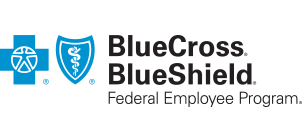Learn how to recognize the signs and symptoms of self-harm and get help for yourself or a loved one. Seven Hills Hospital helps individuals struggling with self-harm build a strong foundation for lasting recovery. Located near Las Vegas, Seven Hills is the leading provider of psychiatric and addiction treatment.
Understanding Self-Harm
Learn About Self-Harm
Self-harm refers to destructive behaviors that people deliberately and purposely inflict upon themselves. The most common forms of self-injury include cutting, burning, biting, pulling out hair, punching oneself, and banging one’s head against a hard object. Although not as common, things such as breaking one’s bones and drinking harmful substances, like detergent or bleach, are also used as a means of self-harm.
There are a couple of common misperceptions that surround the presence of self-harming behaviors. One such misperception is that people who are participating in these acts are doing so because they want to end their lives. Typically, this is not the case. Similarly, some hold the belief that people self-injure as a way to gain attention but, again, this tends to be far from the truth. The reasons why people self-harm are usually due to the fact that they are struggling with a deeper, inner emotional pain that they are unable to control. By inflicting pain onto themselves, they are able to gain control of what they are feeling. Others use self-harm as a way to self-soothe or decrease excessive levels of anxiety and emotional turmoil. The act itself is often impulsive, and many feel a sense of shame and regret after the act is complete.
Statistics
Self-Harm Statistics
The majority of people who engage in self-harming behaviors do so in private, making it difficult to determine any exact statistics on the true prevalence of these behaviors. However, professionals in the field estimate that, in the United States alone, approximately one in five women and one in seven men harm themselves in some way.
Causes & Risks
Causes and Risk Factors of Self-Harm
The most common causes that lead an individual to participate in self-injurious acts can include a combination of the following:
Genetic: The disorders of which self-injury may be symptomatic are believed to have strong genetic links. For example, major depression can lead an individual to participate in self-harming behaviors, and depression itself is known to run in families. People who have family members who struggle with mental illnesses are at a higher risk of developing a mental health disorder as well, which may trigger these behaviors.
Physical: When the neurotransmitters that are responsible for a person’s ability to properly regulate emotions become imbalanced, that individual becomes more susceptible to developing a mental illness, which can ultimately lead to the onset of self-mutilating acts.
Environmental: The environment in which people are surrounded can have a profound impact on a whether or not they begin to self-harm. People who grow up in homes where they are surrounded by constant chaos and uncertainty may find solace in hurting themselves because it provides them with something that they can have control over. Additionally, people who have experienced abuse or severe trauma may find themselves participating in self-injurious acts as a way to experience control over the inner turmoil that has resulted from their experiences.
Risk Factors:
- History of depression
- History of other mental illnesses
- Family history of mental illness
- Experiencing trauma
- Poor coping skills
- Poor regulation of one’s emotions
- Impulsivity
- Coming to terms with one’s sexuality
- Lacking strong, healthy interpersonal relationships
- Death of a loved one
Signs & Symptoms
Signs and Symptoms of Self-Harm
The signs and symptoms of self-mutilation will vary from person to person depending on a number of different factors, the most predominant being the method of self-harm and the length of time in which he or she has been acting out those behaviors. Some examples of symptoms that may be displayed by a person who is purposely hurting him or herself can include:
Behavioral symptoms:
- Wearing long-sleeved shirts or pant, regardless of what the weather is like
- No longer participating in activities that he or she once enjoyed
- Spending excessive amounts of time alone / isolating oneself from family and friends
- Writing off any injuries that are noticed by others as “accidents”
Physical symptoms:
- Frequent bruises, scrapes, cuts, or scratches
- Patches of missing hair
- Scars
- Frequent, unexplainable broken bones
Cognitive symptoms:
- Difficulty concentrating
- Chronic, uncontrollable thoughts about wanting to self-harm
- Difficulty controlling impulses
- Dissociating
Psychosocial symptoms:
- Increased feelings of anxiety and/or agitation when unable to self-harm
- Feelings of helplessness and hopelessness
- Feelings of worthlessness
- Feeling defeated
- Feeling lonely
- Excessive feelings of guilt
Lasting Effects
Effects of Self-Harm
The effects of self-harm can be detrimental on the person participating in the behaviors, as well as on his or her loved ones and in most cases proper treatment should be sought. Some of these long-term effects can include:
- Familial discord
- Feelings of shame, guilt, and disgust with oneself
- Social isolation
- Developing an addiction to substances
- Consistent and intrusive thoughts about the self-harming behavior
- Accidental death
Unfortunately, self-harm also has the potential to result in long-term, devastating physical effects as well, depending upon the method of self-injury being used. Examples of these effects can include:
- Permanent scarring
- Infected wounds
- Severe bleeding
- Anemia
- Permanent tissue damage
- Permanent numbness or weakness in certain parts of the body
- Improper healing of broken bones
- Multi-organ failure
Co-Occurring Disorders
Co-Occurring Disorders
The presence of self-harming behaviors is commonly indicative of the presence of a mental health disorder. The most common disorders associated with self-injury include:
- Depressive disorders
- Obsessive-compulsive disorder
- Panic disorder
- Other anxiety disorders
- Bipolar disorder
- Posttraumatic stress disorder
- Eating disorders
- Borderline personality disorder
- Schizophrenia
- Substance abuse





















